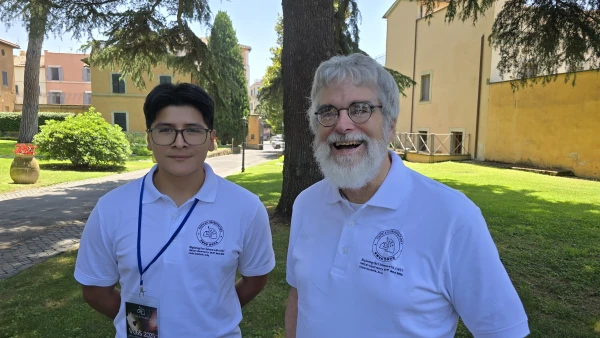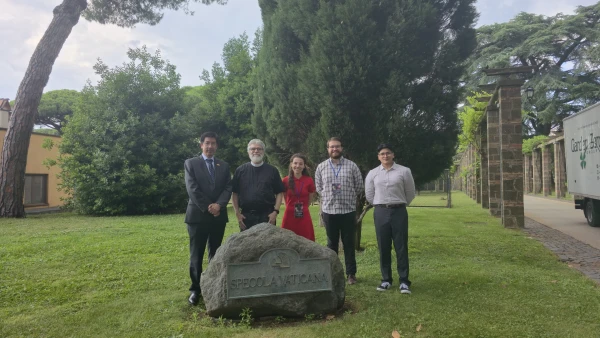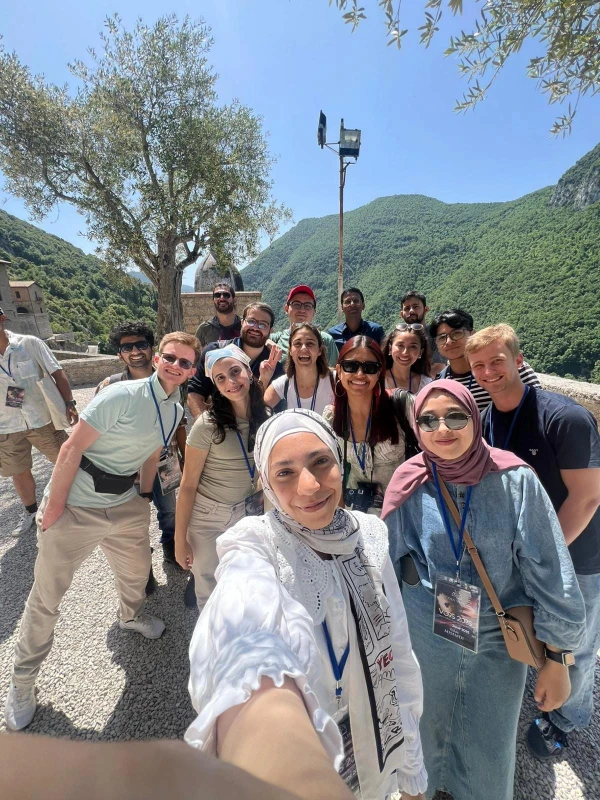Renzo Trujillo Díaz, a 23 -year -old Peruvian physicist born in the Ancash region, recently participated in the summer school of the Vatican Observatory, where he shared his vision of the relationship between faith and science: “I consider that faith and science seek a common goal: the discovery of truth.”
From his childhood rooted in the Catholic tradition in the town center of Carwayoc, in the Peruvian Andes, to the analysis of exoplanets with data from the NASA James Webb space telescope, its history demonstrates that science can also be lived with spirituality, Christian values and vocation of service.
Receive the main news of ACI Press by WhatsApp and Telegram
It is increasingly difficult to see Catholic news on social networks. Subscribe to our free channels today:
“Since childhood I always had that fascination with scancia”, He told in an interview with ACI Press.
That concern led him to study Physics at the National University of San Marcos – the oldest university in Peru and America – and then decided to specialize in astronomy, a branch little explored in Peru.

Science with Catholic roots
Renzo grew in a deeply religious family environment: “I trained as a Catholic: I made baptism, my confirmation, the first communion. I also participated as a child in a contest about religion questions, of the Bible. It is something that I remember with enough love,” he said.
Although today he does not practice his faith with the same frequency, he says he continues to “carry those values.”
His history of faith still accompanies him in the most technical environments: “The values of Catholicism, such as solidarity, empathy and the desire to help you. They I think that can be applied to scientific work. What we investigate is not only for us, but for the common good.”
A key step in his scientific career from the Vatican Astronomical Center
After a first failed attempt, Renzo was accepted in his second application to the prestigious summer school of the Vatican Observatory, where he shared a classroom with students from 22 countries around the world between June 1 and 27, 2025.

“It was a pretty cheerful moment. I got the acceptance mail when I was in a mini workshop in Chile. It was quite beautiful, the truth,” he recalls.
The objective of the course, which lasted four weeks, was to take stock of the observations sent by the James Webb space telescope, developed in collaboration by NASA, the European Space Agency (ESA) and the Canadian Space Agency (CSA). The students were formed by astronomy experts, worked on projects and conducted excursions.
The school focused on the analysis of galaxies and exoplanets using telescope data. “The general objective of the school was to learn to use the data of the first three years of James Webb,” explains Renzo.
For him it was especially shocking to hear about a recent discovery of an even further galaxy while studying that same issue. “It was quite curious to be addressing the issue and, suddenly, see in real time that a more distant galaxy had been observed. That was amazing.”

However, its main interest is in exoplanets. “An exoplanet is a body that forms around a star. In general it refers to planets that are not those found in our solar system.”
His encounter with Pope Leo XIV
During his time in Rome, Renzo had the opportunity to meet Pope Leo XIV. “Greeting the Pope was a very nice moment. I was quite nervous. I told him that it was from Peru, from the province of Huari in Áncash, and answered me with a smile that had been there.”
The young physicist gave him an image of Santa Rosa de Lima. “I gave her telling her that I heard in an interview that was a devotee from her. They told me that she liked it a lot.”
The Pontiff also generated great interest among the participants for his mathematical training according to Renzo: “We were very close to the attention that Pope Leo XIV is a man of science, a degree in Mathematics. We said among us jokingly that our issues might be interested.”

He also says that he felt a spiritual awakening during his time in Rome: “Visiting temples in the municipality of Subiaco was a very beautiful spiritual experience. It helped me to reconnect with religiosity, something that had left a little aside for the university.”
Science with purpose and humanity
Currently, Renzo investigates high -resolution star spectroscopy. “My work focuses on the study of stars similar to the sun. We call them ‘solar twins’, with almost identical parameters to the sun.” Its objective is to continue investigating, preferably in a space center, and bring science to those who have less access.
“Astronomy is not so disseminated. They are not issues so known to the general population,” he says, so he wants to promote scientific dissemination. “Knowledge is not just for us. If a child sees someone explaining what he does with enthusiasm, that can inspire that. That is missing in our country.”

On the use of artificial intelligence in its area of specialization, he points out that “it is a very useful tool, but we must see it as that: a tool. We cannot delegate everything.” “He machine learning It is already used in astronomy. It helps a lot when you have large databases. But human criteria and responsible management are always needed, ”he adds.
Inspire new generations
From Carhuayoc to Rome, the story of Renzo is testimony of a generation of scientists who does not see contradiction between faith and reason. “I would like to continue deepening my faith. I think there is a superior mind that, in some way, had to have intervened to order everything,” said Aci Press.
And the interview with an invitation that summarizes his vocation ended: “I would like to invite parents, adults, not to turn off children’s curiosity. Sometimes children are cut their wings very early when they want to know more.”
“It is important to cultivate that curiosity. This begins in science: with questions like why the grass is green,” he says.

